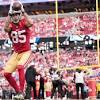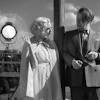Opinion The Montgomery Brawl Was, for Some, a Clarifying Moment

Supported by
Charles M. Blow

- Share full article
- 66

The Alabama Sweet Tea Party.
That was one nickname people gave to a brawl this past Saturday on a Montgomery, Ala., riverfront dock, captured in viral videos, after a group of white people attacked Damien Pickett, a Black riverboat co-captain who was trying to clear a berth for his vessel, and a group of Black people came to Pickett’s defense.
In some obvious ways the whole episode is sad: The situation should never have descended into violence. The people who were asked to move their boat so that the riverboat could dock in its reserved space should simply have complied.
But in other ways, many Black people, in particular, saw it as an unfortunate but practically unavoidable response to what can feel like an unending stream of incidents in which Black people are publicly victimized, with no one willing or able to intervene or render aid.
Black people coming to the defense of that Black man wasn’t just a specific thing that happened at one place and time; it was also a departure, in some ways, from the most memorable images in a history that includes centuries of Black-targeted brutality, which traces the journey of Black people in this land that became the United States.
From its inception, a feature of American slavery was the brutalizing of Black people and Black bodies — the whipping and the raping, the being hung from trees and fed to dogs — with others, generally, unable to defend them.
It has been such a part of Black history that it also became a central theme in Black literature.
In Toni Morrison’s Pulitzer Prize-winning novel, “Beloved,” the protagonist, Sethe, and her husband plan to escape enslavement but get caught. He is hiding in the loft of a barn when her enslaver’s nephews forcibly suck the milk from her breasts and severely whip her, leaving scars that look like, she says, a “tree on my back.”
Her husband sees all this but is powerless to intervene without being discovered, and his powerlessness at witnessing the savaging of his wife drives him insane.
In slavery’s wake, lynchings surged. The decades thereafter saw some notable Black resistance to racial violence, but that resistance was usually overwhelmed, and much of the imagery and ephemera that survive from the period concern the victims of anti-Black violence.
The civil rights movement would successfully meet violence with nonviolence, highlighting how cruel and depraved Southern racists were, but the tactic produced another volume of imagery of Black victimization — beatings, fire hoses, lunch counter mobs.
This American motif has continued into the present era, from the beating of Rodney King in Los Angeles to the choking of Eric Garner in New York to the murder of George Floyd in Minneapolis, all caught on camera.
Darnella Frazier, who was 17 when she recorded the cellphone video of Derek Chauvin with his knee on Floyd’s neck, testified at Chauvin’s trial that “it’s been nights I stayed up apologizing and apologizing to George Floyd for not doing more and not physically interacting and not saving his life.”
Charles McMillian, who was 61 at the time of the trial and also witnessed Floyd being brutalized, broke down crying when he took the stand. As McMillian testified through his tears, “I couldn’t help but feel helpless.”
Through all of this, particularly the endlessly replayed videos, other Black people experienced a vicarious trauma that was only compounded by the feelings of vulnerability that come from being unable to intervene, of feeling that they, too, could have been these victims and that no one could or would come to save them.
What happened in Montgomery stood in contrast to much of that norm.
There, the righteous indignation of a community found an outlet when Black people came to the defense of a Black man under attack. There was therapy in it for many who saw it — a sense of historical correction.
And as an added bit of historical poetry, the brawl happened in Alabama, with its horrible history of slavery and notorious convict leasing system, which Douglas A. Blackmon called “slavery by another name” in his Pulitzer Prize-winning book of the same name.
It happened on a riverfront where enslaved people of African descent were transported to be sold in a city that later played a key part in the civil rights movement with the Montgomery bus boycott.
While violence is never the ideal, self-defense has a morally universal appeal and justification. And there comes a time when defense is the only option, when standing upright is the only appropriate posture. Describing the events in this case, even Montgomery’s police chief pointed out that members of the riverboat’s crew “came to Mr. Pickett’s defense.”
Let’s all hope and pray that more situations don’t descend into violence like this one did and that cooler heads always prevail. But let’s also understand that no people are obligated to endure violence without defending themselves or being defended.
The Times is committed to publishing a diversity of letters to the editor. We’d like to hear what you think about this or any of our articles. Here are some tips. And here’s our email: letters@nytimes.com.
Follow The New York Times Opinion section on Facebook and Twitter (@NYTopinion) and Instagram.
Charles M. Blow joined The Times in 1994 and became an Opinion columnist in 2008. He is also a television commentator and writes often about politics, social justice and vulnerable communities. @CharlesMBlow • Facebook
- Share full article
- 66


 United States
United States Argentina
Argentina  Australia
Australia  Austria
Austria  Brazil
Brazil  Canada
Canada  Chile
Chile  Czechia
Czechia  France
France  Germany
Germany  Greece
Greece  Italy
Italy  Mexico
Mexico  New Zealand
New Zealand  Nigeria
Nigeria  Norway
Norway  Poland
Poland  Portugal
Portugal  Sweden
Sweden  Switzerland
Switzerland  United Kingdom
United Kingdom 

























